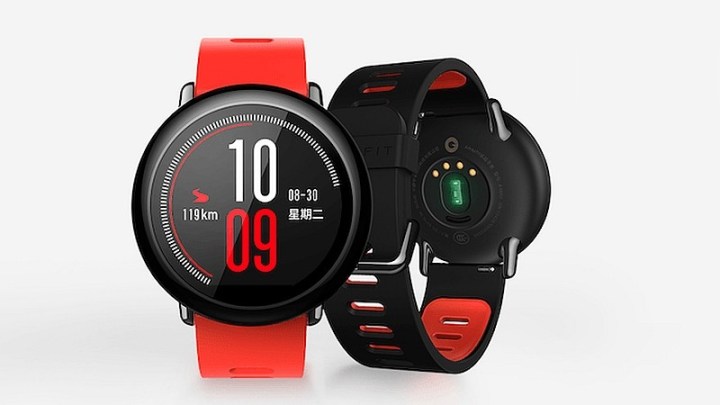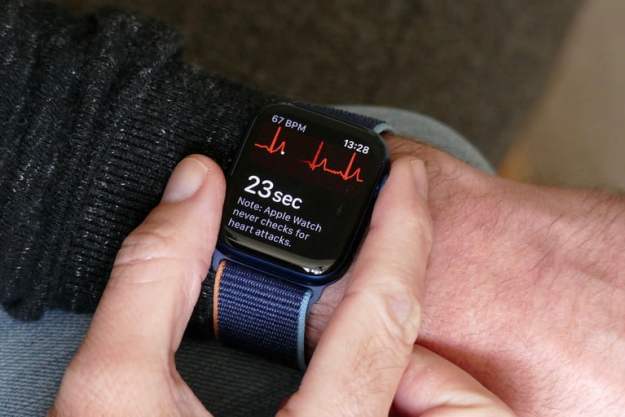It’s true that wearables are a dime a dozen, these days. That’s no surprise — companies of all sizes are eager to cash in on a market some analysts predict could be worth an estimated $25 billion by 2019. Apple’s staked it claim with the Apple Watch. Samsung’s has done the same with the Gear S2. And now, there’s new competition in town: the Amazfit PACE.
The Amazfit PACE, which is manufactured by Huami, Xiaomi’s ecosystem partner responsible for the Mi Band, leans decidedly toward the affordable end of the smartwatch spectrum. That’s may not a major differentiator in a market filled with pricey gadgets like the $1,500 Tag Heuer Connected and the $995 Movado Bold Motion. But the Amazfit PACE won’t break the bank for the hardware on offer, here: a ceramic, scratch- and water-resistant IP67 body that supports standard 22 mm watchbands. In terms of silicon, it packs an always-on display and 2.4GB of internal storage, the latter of which stores music and other offline media.

The Amazfit PACE also houses a myriad of activity-tracking sensors. Inside, you’ll find a Bluetooth 4.0 LE, GPS, and a heart rate sensor. It doesn’t run Android Wear, Google’s smartwatch operating system, but instead pairs with the Xiaomi’s Mi Fit app on Android and iOS in order to deliver much the same functionality — namely, mirroring incoming social media messages, texts, calls, and reminders.
All that tech may sound like a massive power suck, but Xiaomi begs to differ. The firm estimates the Amazfit PACE can last about five days on a charge, or about 36 hours with the GPS sensor enabled. Disable all but the pedometer, and the company says you can eke 11 or so days out of the thing, making it useful for weeklong camping trips in the wilderness, no doubt.
The Amazfit PACE first went on sale in China on August 31, but is set to make its U.S. debut on November 22. The watch will retail at the promotional price of $129; after November 28, the price will increase to the regular MSRP of $159.

The Amazfit PACE isn’t Huami’s first rodeo in the wearables market. The company launched its smartwatch division two years ago with the Mi Band, and has since expanded earnestly with efforts like the cute, kid-focused $50 Mi Bunny. In terms of price and specifications, the Amazfit PACE slots comfortably in the company’s top tier, and holds its own against the competition. A comparable Android Wear watch, the Sony SmartWatch 3, retails for $140. Cheaper options like the $100 Asus Zenwatch, meanwhile, omit components like GPS.
Xiaomi’s rapid-fire approach to the wearables market has paid dividends. In the first quarter of this year, it shipped 3.7 million smartwatches and fitness trackers, representing growth in the company’s wearables business of 41.8 percent year over year. That has helped cement the company’s second-place position in the market: as of March of this year, it commanded a 19-percent share behind Fitbit’s 24.5 percent.
Article originally published in August 2016. Updated on 11-17-2016 by Lulu Chang: Added news that the Amazfit will go on sale in the U.S. on November 22.
Editors' Recommendations
- The Pixel Watch 2 just got a feature it should have launched with
- The U.S. government is now using AirTag trackers to spy on packages
- A mysterious OnePlus phone might launch in the U.S. soon
- HMD Global shows its serious about U.S. expansion with 5 new Nokia phones
- WhatsApp launches crypto-powered mobile payments in the U.S.


